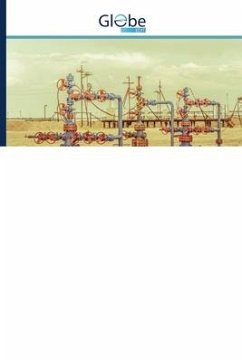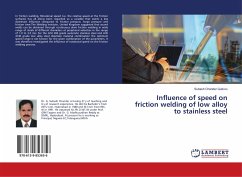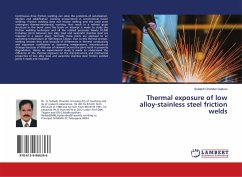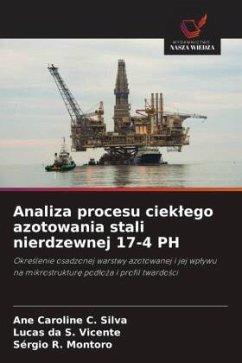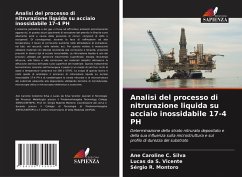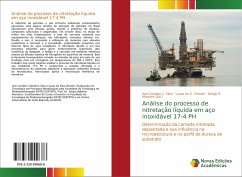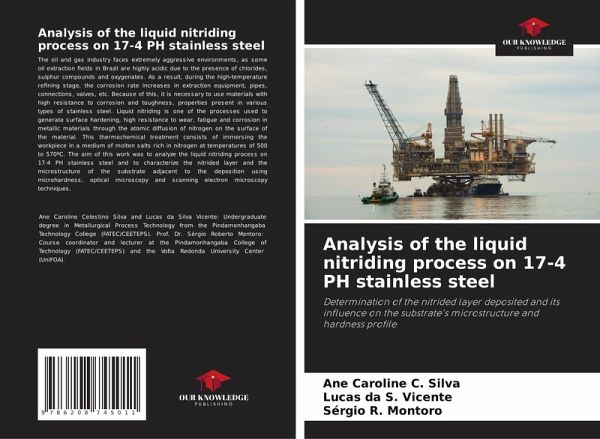
Analysis of the liquid nitriding process on 17-4 PH stainless steel
Determination of the nitrided layer deposited and its influence on the substrate's microstructure and hardness profile
Versandkostenfrei!
Versandfertig in 6-10 Tagen
19,99 €
inkl. MwSt.

PAYBACK Punkte
10 °P sammeln!
The oil and gas industry faces extremely aggressive environments, as some oil extraction fields in Brazil are highly acidic due to the presence of chlorides, sulphur compounds and oxygenates. As a result, during the high-temperature refining stage, the corrosion rate increases in extraction equipment, pipes, connections, valves, etc. Because of this, it is necessary to use materials with high resistance to corrosion and toughness, properties present in various types of stainless steel. Liquid nitriding is one of the processes used to generate surface hardening, high resistance to wear, fatigue...
The oil and gas industry faces extremely aggressive environments, as some oil extraction fields in Brazil are highly acidic due to the presence of chlorides, sulphur compounds and oxygenates. As a result, during the high-temperature refining stage, the corrosion rate increases in extraction equipment, pipes, connections, valves, etc. Because of this, it is necessary to use materials with high resistance to corrosion and toughness, properties present in various types of stainless steel. Liquid nitriding is one of the processes used to generate surface hardening, high resistance to wear, fatigue and corrosion in metallic materials through the atomic diffusion of nitrogen on the surface of the material. This thermochemical treatment consists of immersing the workpiece in a medium of molten salts rich in nitrogen at temperatures of 500 to 570ºC. The aim of this work was to analyze the liquid nitriding process on 17-4 PH stainless steel and to characterize the nitrided layer and the microstructure of the substrate adjacent to the deposition using microhardness, optical microscopy and scanning electron microscopy techniques.



